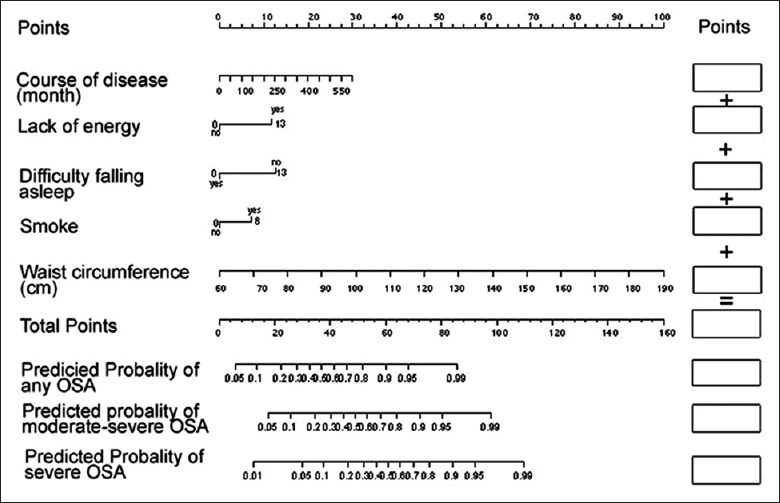Figure 1.

Nomogram for predicting OSA on PSG. Instructions for physicians: To obtain the nomogram-predicted probability of PSG, locate patient values on each axis. Draw a vertical line to the “Point” axis to determine how many points should be attributed for each variable. Sum the points for all variables to obtain the total point. Locate the total point on the “Total Points” line, so that the individual probability of OSA on PSG can be assessed on the “Predicted probability of OSA” line. There are three probability lines corresponding to having any OSA, having moderate-severe OSA and having severe OSA, respectively. For example, for a patient with the following characteristics: Ten years of duration of disease, no smoking, no difficulty of falling asleep, lack of energy, waist circumference equal to 101 cm, his/her corresponding total score is 6 + 0 + 13 + 13 + 27 = 59; his/her corresponding probability of having OSA is 0.92, his/her probability of having moderate-severe OSA is 0.76 and his/her probability of having severe OSA is 0.53. OSA: Obstructive sleep apnea; PSG: Polysomnography.
